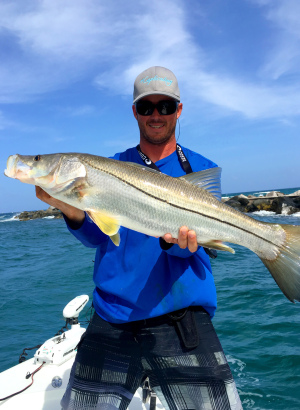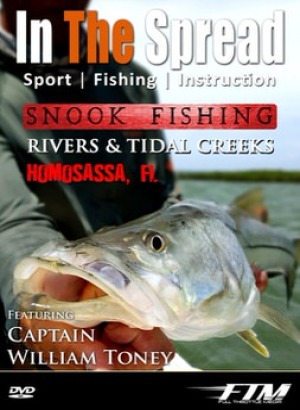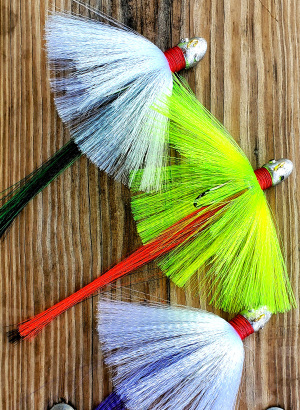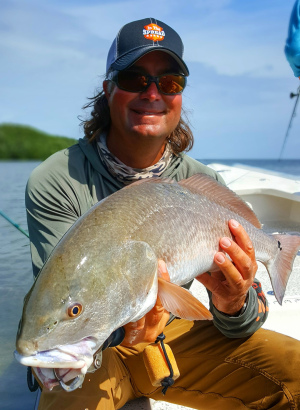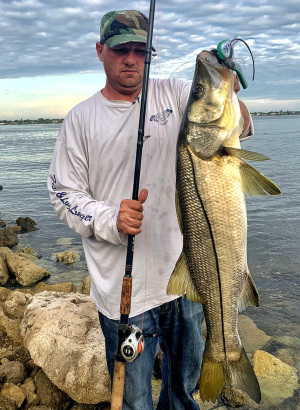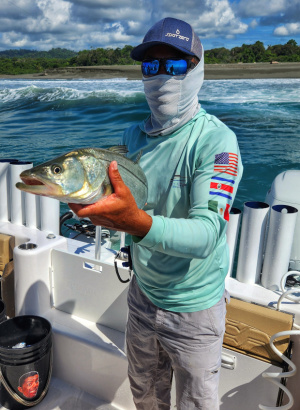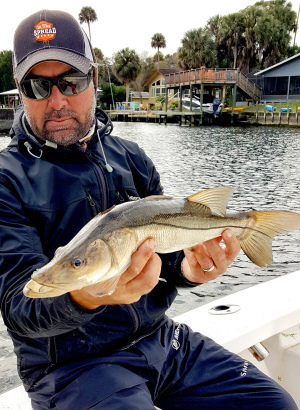Snook fishing on Florida's Big Bend has become a viable option for anglers. This comprehensive guide covers productive locations like Withlacoochee River and Cedar Key, plus essential tackle, tidal timing, techniques, and regulations for Nature Coast success.

How to Catch Snook on Florida's Big Bend During the Spring
How to Catch Snook on Florida's Big Bend During the Spring
Snook fishing on Florida's Big Bend has become a legitimate pursuit for anglers over the past several years, transforming what was once considered marginal water into productive snook habitat. The diverse terrain spanning from the Withlacoochee River through Cedar Key to Steinhatchee now offers anglers multiple opportunities to target this prized gamefish in waters where few previously thought to look.
Where to Find Big Bend Snook: Prime Locations and Structure
How do you locate snook in Big Bend waters? The key lies in understanding that each area along the Big Bend and Florida's Nature Coast offers distinct environments where snook thrive, requiring different approaches and techniques.
The Withlacoochee River system provides the most consistent snook fishing opportunities in the region. Here, snook concentrate around creek mouths with deep, rocky shorelines where baitfish funnel through during tidal changes. The river's structure creates natural ambush points that snook use to their advantage, particularly where depth changes occur rapidly.
Cedar Key snook fishing centers around the outside keys and their associated points with hard bottoms. These areas become magnets for snook during incoming tides, as the fish migrate inward following baitfish movements. Before tidal flow strengthens, snook often stage in deep sand holes adjacent to these hard-bottom areas, creating predictable patterns for knowledgeable anglers.
Essential Tackle Setup for Big Bend Snook Success
What tackle setup works best for Big Bend snook fishing? Success starts with proper leader selection and continues through specific lure choices that match local conditions.
The foundation of any snook fishing tackle setup must include a 30-pound fluorocarbon leader. This isn't merely a suggestion but a necessity driven by snook anatomy. Their abrasive mouths and razor-sharp gill plates easily sever lighter lines, turning what should be memorable catches into frustrating break-offs. While 20-pound leader might occasionally suffice, the risk of losing significant fish increases dramatically.
Best lures for Big Bend snook fall into two primary categories that consistently produce results. Soft plastic baits, particularly glow and watermelon red flake patterns, excel in these waters. Soft plastic shrimp and paddle tail designs create the realistic action that triggers strikes from both feeding and reaction-oriented snook:
- Glow patterns prove especially effective during low-light conditions and stained water situations common in Big Bend areas
- Watermelon red flake provides a natural baitfish profile that works across various water clarities and times of day
Reading Water: Understanding Snook Habitat and Movement Patterns
Where do snook position themselves in Big Bend waters? Understanding snook habitat preferences directly impacts fishing success and helps anglers identify productive water beyond specific locations.
Creek mouths with deep, rocky shorelines represent prime snook real estate throughout the Big Bend region. These areas concentrate baitfish during tidal movements while providing snook with both feeding opportunities and escape routes to deeper water. The combination of structure, depth change, and current flow creates ideal ambush points that snook utilize consistently.
Mastering Tidal Strategies for Consistent Snook Success
When is the best time to fish for snook on Big Bend tides? Timing remains crucial for consistent success, with specific tidal phases producing dramatically better results than others.
High outgoing tides offer the best chances for snook encounters throughout the Big Bend region. As water drains from shallow areas, baitfish concentrate in deeper channels and around structure, creating feeding opportunities that snook readily exploit. This tidal phase also positions snook in more predictable locations, allowing anglers to target specific areas with confidence.
During incoming tide periods, snook behavior shifts as they migrate inward following rising water. Around outside keys and points with hard bottoms, this movement creates windows of opportunity as fish gather before dispersing into newly flooded areas. Understanding these migration patterns allows anglers to position themselves where snook will be rather than where they were.
Advanced Techniques: Live Chumming and Stealth Approaches
How do you activate snook feeding in Big Bend waters? Live chumming techniques, proven effective in areas like Tampa Bay and Chokoloskee, can trigger feeding responses from otherwise inactive snook in Big Bend waters.
This technique works by creating a scent trail that draws snook from surrounding areas while simultaneously exciting fish already present. The key lies in matching chum size and type to local baitfish populations, creating a natural feeding scenario that snook readily join.
Stealth approaches become increasingly important when targeting snook in Big Bend's often shallow, clear waters. These fish demonstrate remarkable wariness in skinny water, requiring careful boat positioning and quiet presentations:
- Kayaks provide ideal platforms for accessing shallow snook habitat without creating disturbance
- Shallow-draft boats equipped with quiet trolling motors allow access while maintaining stealth
- Noise discipline extends beyond propulsion to include avoiding dropped items, excessive talking, and unnecessary movement
Regulations and Conservation for Sustainable Snook Fishing
What regulations apply to snook fishing in Big Bend waters? During spring season months of March and April, anglers must possess a valid snook stamp to legally retain snook. The daily bag limit remains one snook per angler, with a slot size requirement of 28 to 33 inches.
These regulations exist to protect this emerging fishery while allowing reasonable harvest opportunities. Practicing catch and release, particularly for fish outside the slot size, contributes to population sustainability and ensures future generations can enjoy Big Bend snook fishing opportunities.
Weather conditions significantly impact snook behavior throughout the region. Changes in barometric pressure and temperature directly influence feeding habits, making weather monitoring an essential component of trip planning. Falling pressure often triggers increased feeding activity, while rising pressure may require more persistent presentations to generate strikes.
Embracing Big Bend Snook Fishing Opportunities
The transformation of Florida's Big Bend into legitimate snook fishing territory represents an evolving opportunity that rewards prepared anglers. Success in these waters comes from understanding that each location demands specific approaches, from the Withlacoochee River's structured environments to Cedar Key's tidal-driven patterns and Steinhatchee's emerging potential.
The combination of proper tackle selection, strategic timing around tidal movements, and respect for both the fish and regulations creates a foundation for consistent success. As this fishery continues developing, anglers who master these fundamentals while maintaining conservation-minded practices will find themselves at the forefront of an exciting fishing frontier that bridges the gap between Florida's traditional snook waters and previously untapped northern territories.
Login
to leave a review.
User Reviews
There are no reviews yet.Complete Dredge Pulley Setup Guide
Saltwater
12.28.2020
High Speed Wahoo Trolling Rig
Saltwater
09.07.2018
Best Bait for Wahoo
Saltwater
12.30.2023
Pinfish - A Comprehensive Guide
Saltwater
11.10.2023
0

